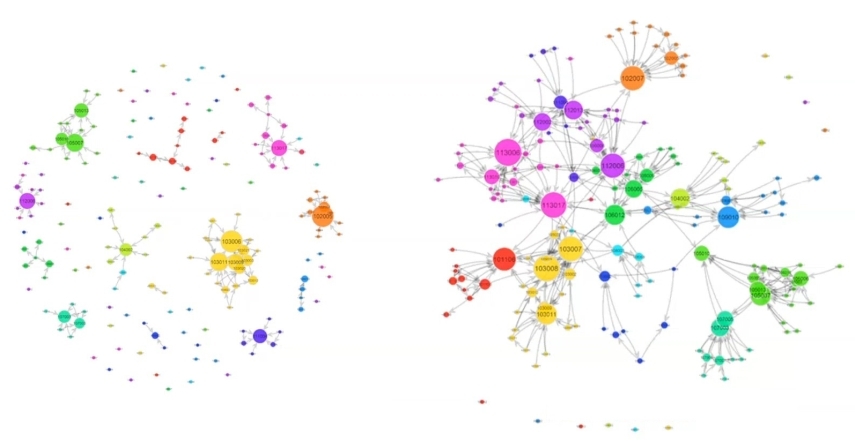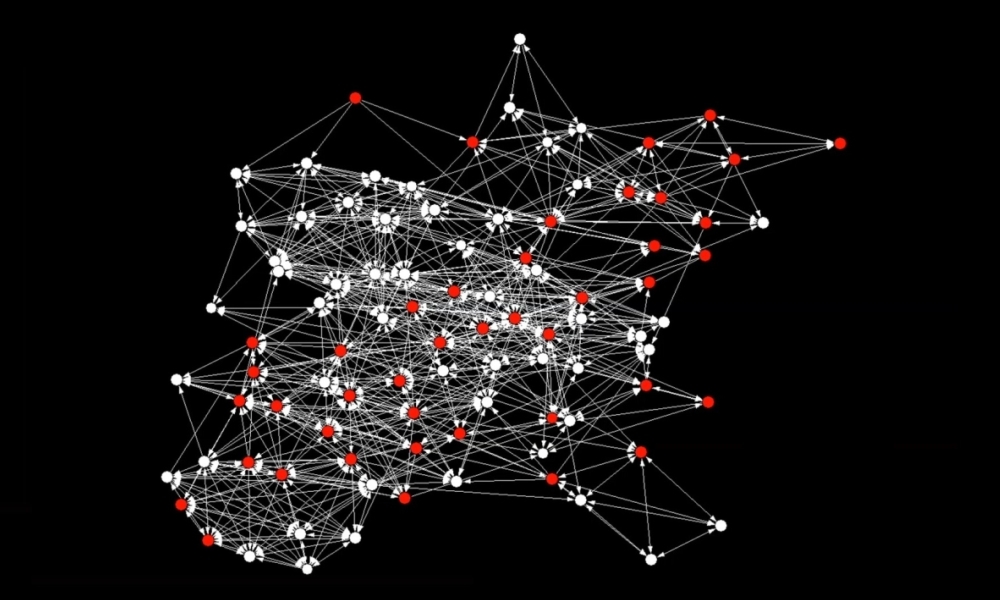Our connections with others have an influence on our own behaviour. Social networks form in lots of different contexts, including at school and in the workplace. Social Network Analysis (SNA) is now offering insights into these important, but often invisible relationships.
Dean Lusher is Professor of Innovation Studies at Swinburne University and Head of its Social Network Research Lab.
As a social network researcher he’s worked with a range of partners, including with schools to explore peer influence on academic achievement, with AFL clubs looking at club cultures, and with the Victorian Department of Health on the spread of COVID-19. Through his Swinburne start-up company SNA Toolbox, he’s currently co-leading a project with Professor Helen Cahill from Melbourne University to assess the impact of a respectful relationships program for high school students.
When it comes to the workplace, Lusher explains: ‘If we think about social networks, every organisation has it’s organisational chart – bosses and reporting managers, and so on – but it also has informal networks and relationships among people that don’t necessarily follow the organisational chart, and that’s how the work really gets done.’
Lusher and his team work with partners in different ways to collect data, including surveys and interviews, then use SNA visualisation tools to create network visualisations and statistical network modelling tools to ‘discover what the eye cannot see’ through visualisation. Through statistical network modelling, these complex social networks can be broken down into smaller patterns that represent different social processes. For example, the ‘brokers’ who act as intermediaries between groups, or those in reciprocal ‘you scratch my back’ relationships.
‘Networks have different actors or nodes (people, organisations, teams …) and different forms of relationships. Networks could be advice seeking, trust, someone you disagree with …,’ Lusher says.
‘At a very general level, network visualisations give us powerful insights into an organisation and its different units, whether there’s a lot of communication within units but very little cross-unit communication.’
As this network visualisation into silos and inter-unit connectivity in an organisation shows, only the connections and the nature of those relationships is mapped, no-one is identified.

‘I think everyone has got a partial view of the overall network, and it’s not until you put all of those partial views together that you understand how it coheres as a whole,’ Lusher says. ‘That’s the value of the network – to give that bird’s-eye view of the informal social connectivity that we know is there, we know is important, but we tend not to measure or try and understand. But if these relationships are important, then it’s also valuable for us to measure and understand their impact.’
What to do with that information is the next, crucial step. ‘As lovely as the network diagrams do look, it’s about: What does it tell us? What can we do? It provides a great evidence base of where people are at and encourages people to think about what they want to do, what they want their network to look like, what their organisation should be like. Or, for those people who’ve already put interventions or programs in place, it’s a great way to measure their success or otherwise. Our social connections to others impact on our own outcomes – on our learning, on our well-being, on our happiness. Understanding the impact of social networks on our key outcomes is what SNA can help us achieve’
Social network analysis can be different from other perspectives. For example, looking at diversity management in an organisation to explore if females are really included as influential voices, or if they’re just on the periphery of the network. ‘A key issue of networks is understanding, to some degree, the prominent people, the connected people whose voice may be heard more than others, and not just looking at the “average attitudes” people hold across an organisation,’ Lusher explains.
In education, that analysis may focus on staff and leadership to ensure networks are still connected enough to function well if someone leaves, and not reliant on one key person, or the strength of networks in a classroom and the link to learning outcomes. On this second focus, Lusher says: ‘Generally, I think learning is in great part a social activity that we do with other people and this allows us to understand in different ways how those connections might impact on learning.
‘It’s through our interactions with teachers who might get us excited about learning, or through our interactions with peers, that can reinforce in positive ways learning and learning opportunities. Taking it beyond the individual, and making it more a relational exercise, I think, gives us a whole new way of looking at education.’
Whilst there may be some recurring patterns that happen across different contexts, one school is likely to be different from another school and one class is likely to be different from another. In 2011, Lusher wrote a paper on masculinity attitudes in relation to educational achievement at two secondary, all-boys schools in Australia.
‘One thing that was interesting from [one of the schools in that study] was the boys that really applied and thought learning was important and did well were more likely to be chosen as friends by other students, which suggests that there’s a very positive culture towards achievement within that school. Whereas others schools I’ve been in, it’s the boys that muck around, the boys that perform badly are the more influential people in the school, and that sets a very different tone for learning.’
By mapping and understanding our connections and relationships we can start to leverage that knowledge. ‘So, it’s this idea of a network intervention – how can we make systematic changes to a classroom or a school? Understanding the informal culture of an organisation is something that networks are really good at doing, because they start to see – what are the attitudes that people hold?, and then what influence do they have on others around them?’
Lusher says having a bird’s-eye visualisation of your organisation, team, school, or student cohort can be an interesting (and intriguing) experience. ‘I think for a lot of people, as with all good research, SNA tells them a bit of what they already know but then tells them something they didn’t. For lots of people, they go “oh, okay, that’s what I hoped it would look like, it’s all connected, but it’s interesting what’s happening over here, I didn’t realise”.
‘We don’t identify people in our network diagrams and people are always having a guess at who they might be, where they might be in the diagram. I’ve had plenty of occasions where the boss has said “well, I’m obviously that person in the middle there who’s really connected” and in fact they’re not, but you can’t say that to them.’
References
Lusher, D. (2011). Masculinity, educational achievement and social status: a social network analysis. Gender and Education, 23(6), 655-675.



